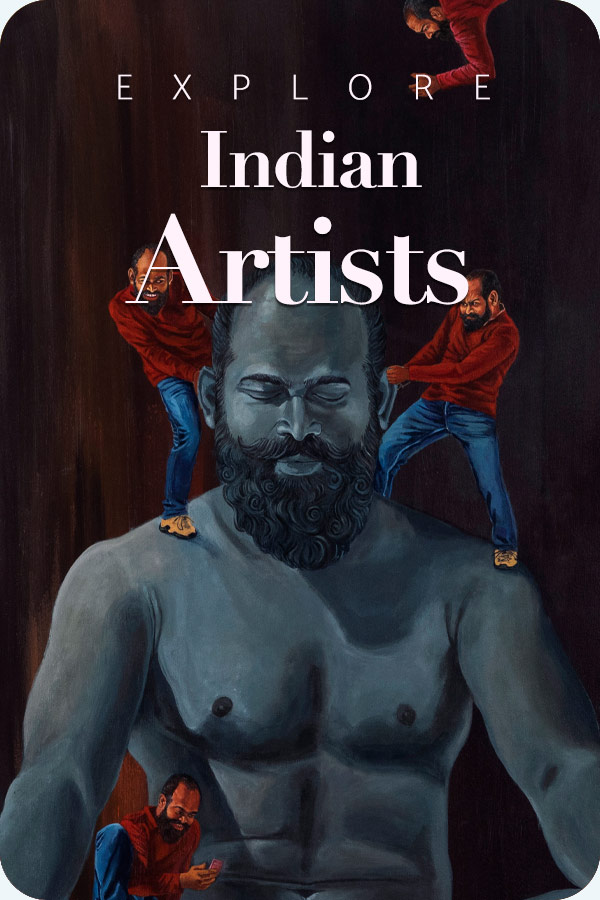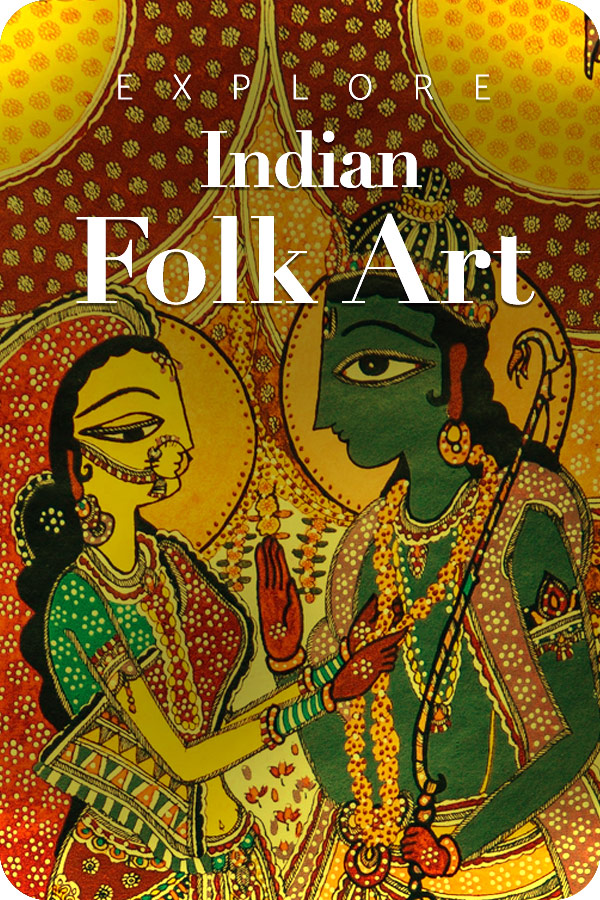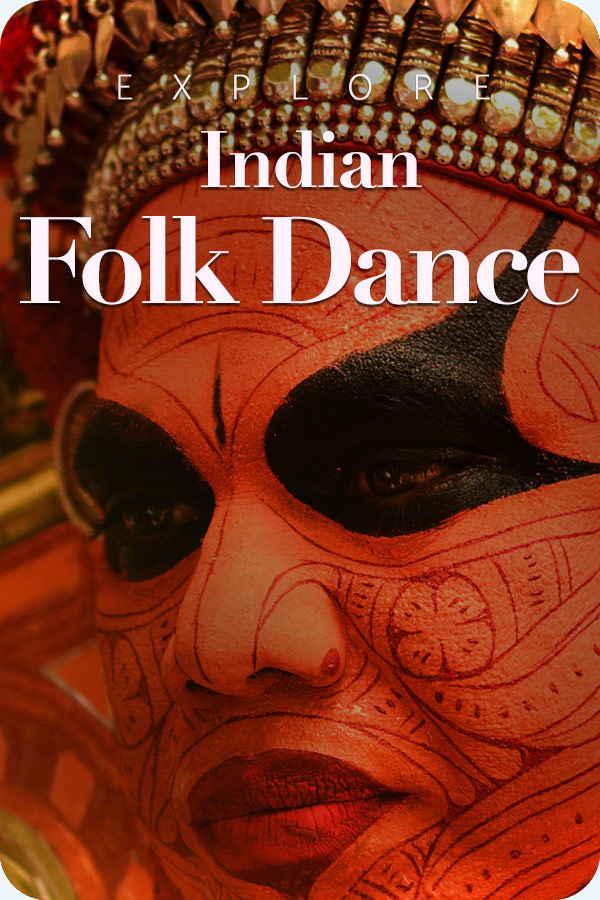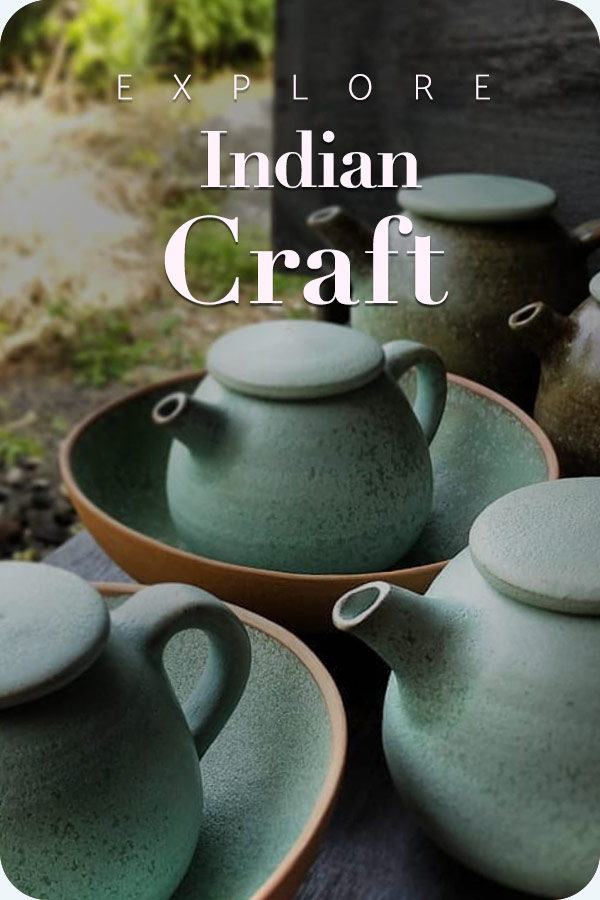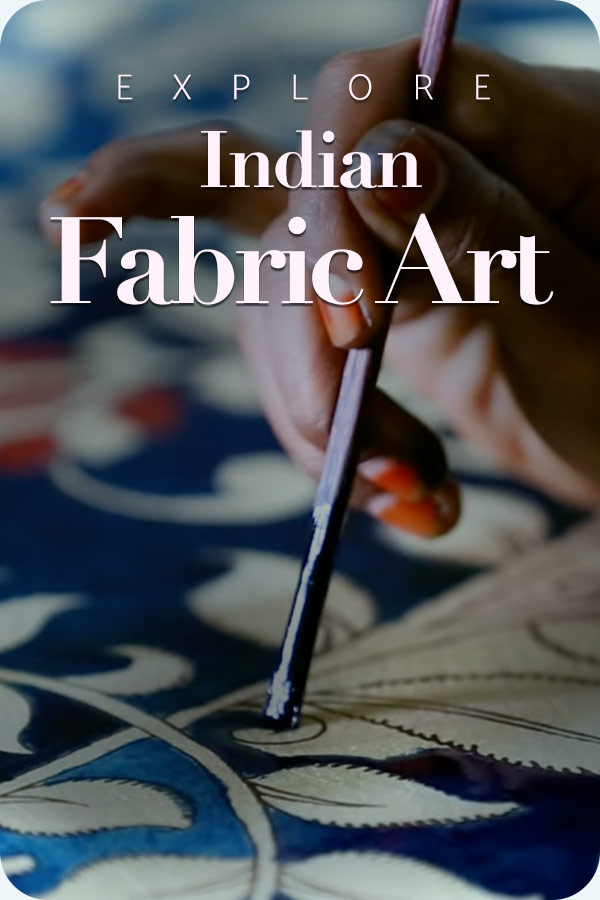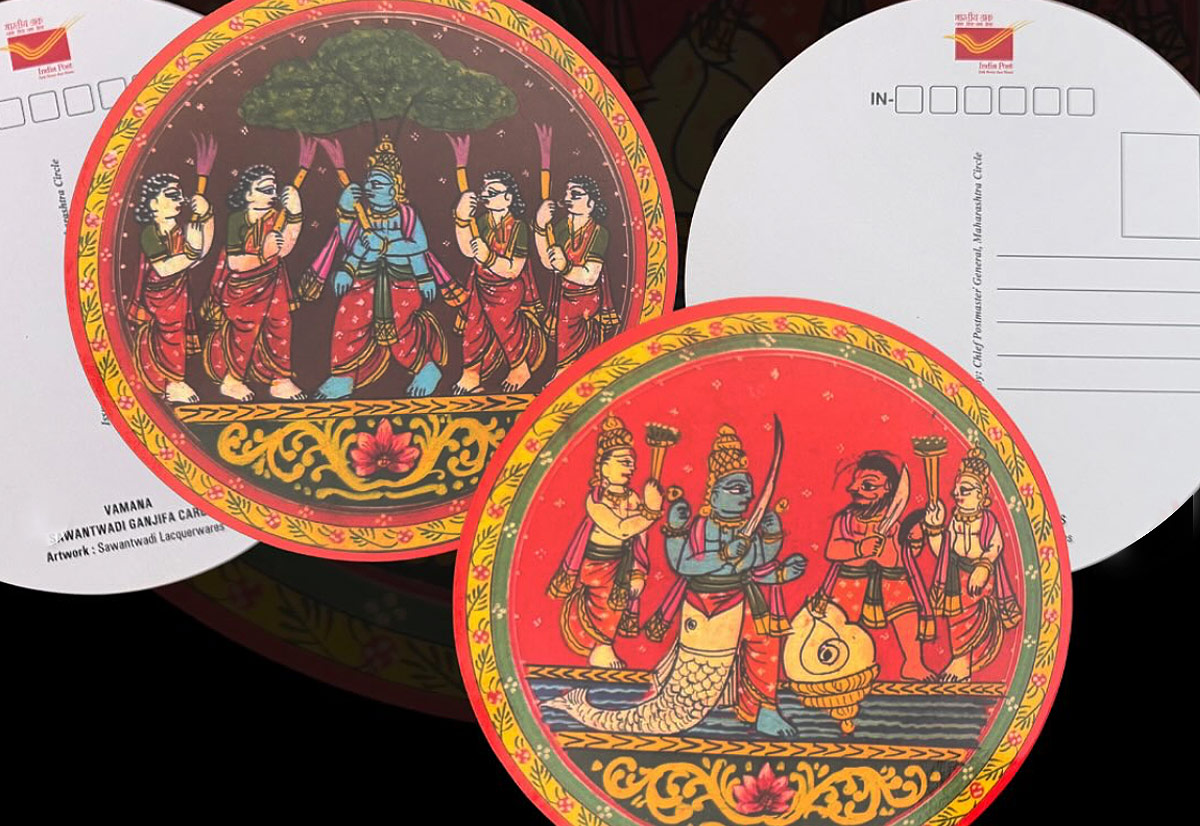
India has achieved a landmark philatelic innovation; the artisans of the Sawantwadi Palace and the India Post (Maharashtra Circle) joined hands and created the country’s first circular postcards. This unique release transcends traditional postal stationery by blending heritage craft with modern postal services. The innovation here is championing, revival, and safeguarding the endangered, 500-year-old art form known as Ganjifa by utilizing the elaborate postal nexus. At a ceremony during National Postal Week 2025 in Mumbai, Chief Postmaster General Amitabh Singh released a set of Sawantwadi Ganjifa–themed postcards, each hand-painted with the Dashavatara (Ten Avatars of Vishnu) motif. Each piece of these postcards is painstakingly created by Sawantwadi’s master artisans and finished in lacquer.
Also, the adoption of the circular format is not just an aesthetic choice; it’s a reflection of the evolution of the ganjifa form of art. The indigenous Indian Ganjifa playing cards, which originated from Persian rectangular decks, were traditionally round in shape. While contemporary postcards are rectangular in shape, the placement of these circular postcards does stand out and also reflects on the tangible heritage. Additionally, the item itself is a collectible artifact, aligning with both cultural and innovative practices of heritage conservation. This unparalleled collaboration also provides a wide space for private-public partnerships, in which extensive logistical support is offered by the state agency, i.e., India Post, creating a conduit for cultural dissemination. This is consciously strategized to transform the niche of local art into a wide, commercially available, and accessible product. This will equally ensure the continuity of earning a livelihood for the artisans who are carrying this endangered art form forward.
Historical Background and Context
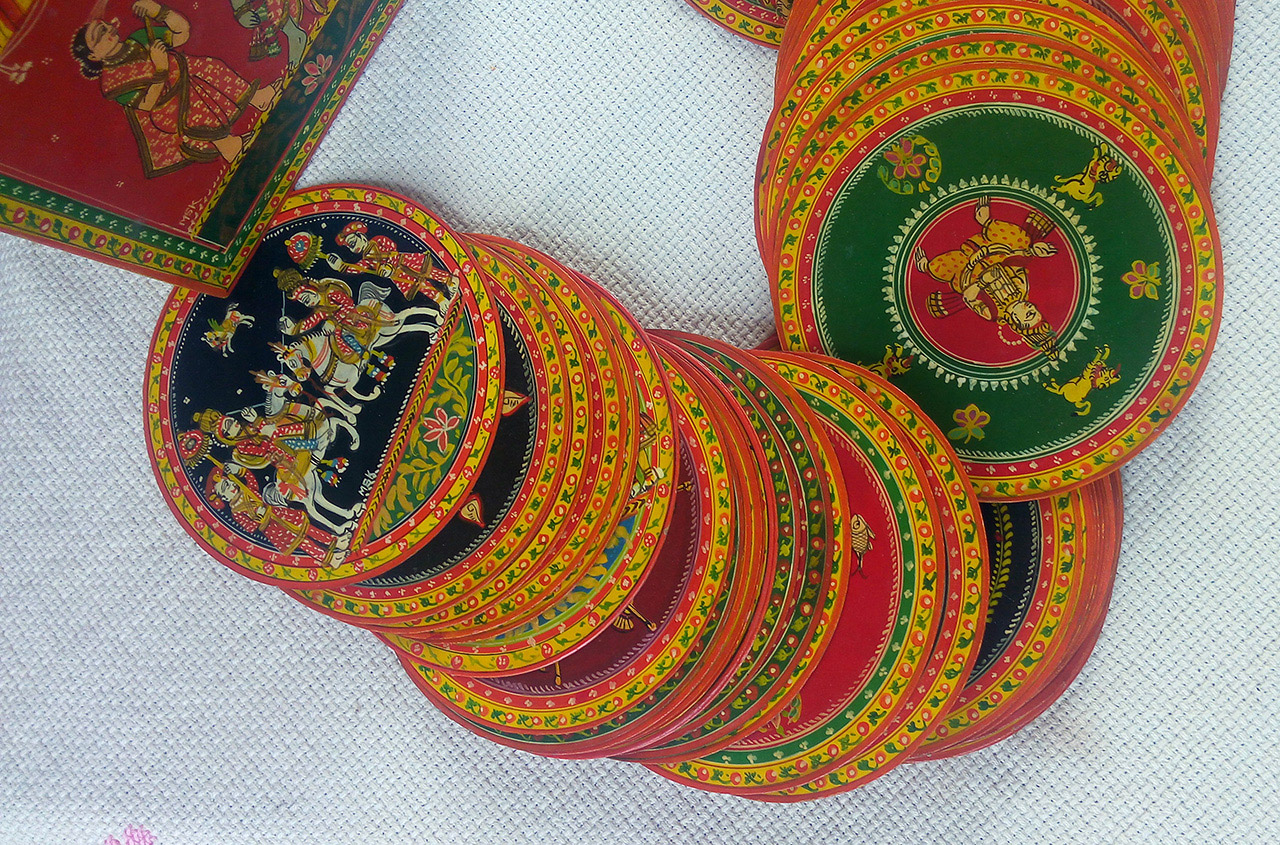
In layman’s terms, the Ganjifa is an ancient Indian card game and an art form that dates back to the 16th century. Its etymological root is in the Persian term Ganjifeh, and it became popular in the Indian subcontinent during the Mughal period. In the Mughal era, it attained the status of “luxury and intellect” in the courts of Emperor Akbar and Shah Jahan. The classic Mughal era deck featured 8 suits and 96 cards. Although initially recognized as a court game, the Ganjifa was gradually more Indianized. Then emerged the Dashavatara Ganjifa, which was created with the intent to make an explicit appeal to the Hindu communities, and this new deck comprised 10 suits dedicated to Hindu mythology.
The craft spread across regions, flourishing under royal patronage, such as Sawantwadi in Maharashtra, Odisha, and Mysore, each with its distinct styles. The Dashavatara set was primarily focused on Sawantwadi art, depicting the ten avatars of Lord Vishnu. In the Sawantwadi variation, these traditional decks often comprise 120 cards. The iconographical perspective of Indigenization transformed it from a foreign court pastime into a vivid art form, deliberating on visual storytelling while emphasizing spirituality and culture. By the late 19th century, Ganjifa was nearly extinct in India, surviving mainly in Sawantwadi, where generations of the royal Sawant Bhosale family kept it alive. Yuvrani Shraddha Lakham Sawant Bhonsle of Sawantwadi Palace notes that the art arrived in her state in the late 16th–early 17th century and was revived by her grandparents in the 1970s. In January 2024, Sawantwadi Ganjifa won a Geographical Indication (GI) tag, the first for this craft, denoting its watershed cultural worth.
The Mastery of Craftsmanship
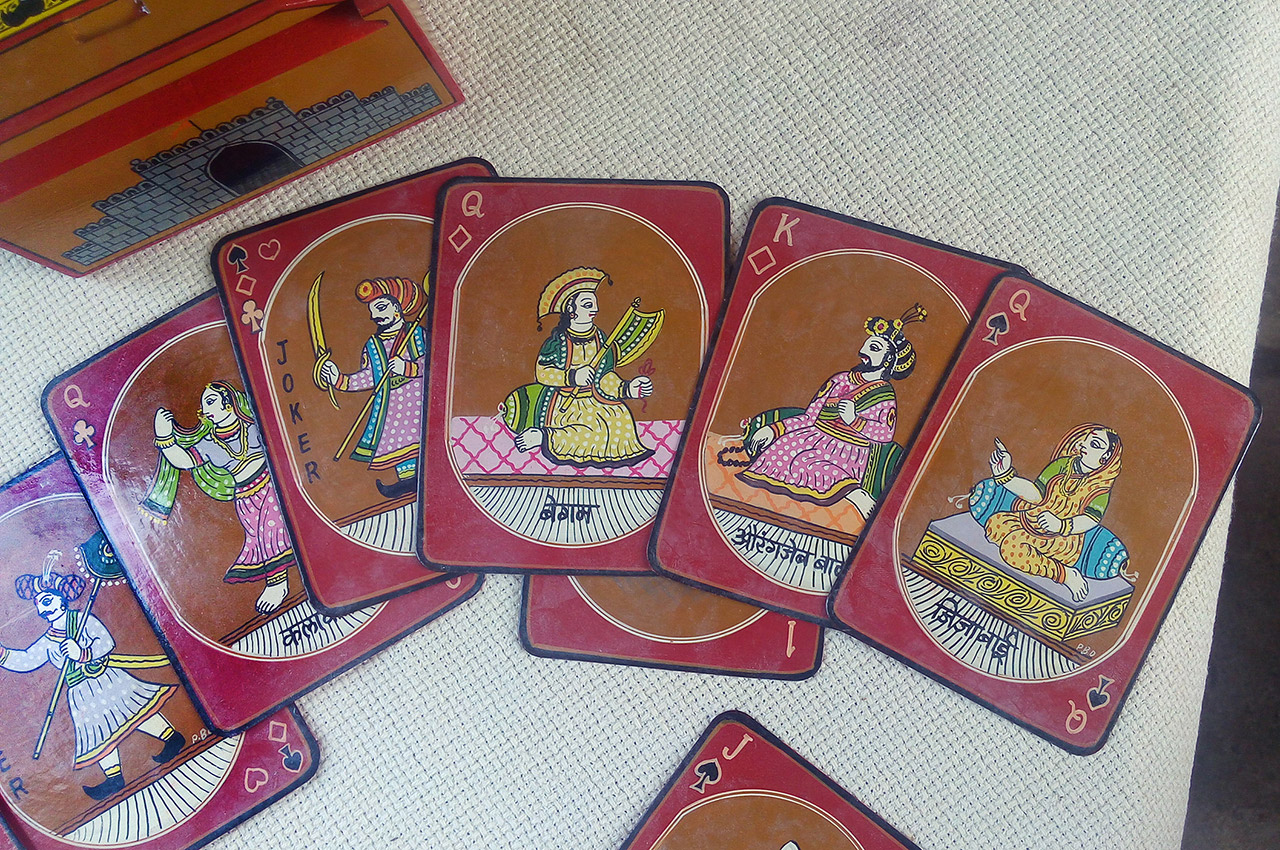
The craftsmanship skills required to produce the Ganjifa art are elaborate and extremely time-intensive. The specialized artisans responsible for producing ganjifa art and lacquerware belong mainly to the Chitrakar or Chitari community. Historically, the material used to prepare the cards was a direct reflection of the status of the player. For instance, cards inlaid with precious stones, ivory work, and tortoise shells were reserved for the royalty or the Darbar Kalam, while cards made of cloth, palm leaves, or papier-mâché (Bazâr Kalam) were widely circulated among the commoners. Overall, the procedure for the production of these cards involved common steps like intricate hand-painting, the use of natural hues, and finishing it with a coat of lacquer (Indian shellac or natural resin). The last step is the most important one, as it makes the cards stiff and durable to withstand innumerable rounds of play.
Today, Ganjifa is recognized as a rare and endangered folk art. With the newly made innovation, the India Post explicitly aims to “raise awareness and support the revival” of this heritage through philately. By reproducing Ganjifa imagery on postal cards, the initiative forms a bridge between modern collectors and a centuries-old tradition.
The Royal Guardianship: Sawantwadi Palace and the Bhonsle Legacy
Founded in 1627, the Sawantwadi town functioned as the capital of the Bhonsle dynasty. It is due to the relentless patronage of the royal family that Sawantwadi remains the only place in India where the ancient art of Ganjifa is still practiced. The story of its revival from almost a state of extinction begins in the 1970s, when Lt. Col. Raja Bahadur Shivaram Sawant Bhonsle and his wife, Rani Satvashiladevi Bhonsle, acknowledged that the craft was at the verge of extinction. The first step taken by the royal couple was learning the craft by themselves from the 80-year-old master artisan, Pundalik Chitari. After that, they founded the ‘Sawantwadi Lacquerwares’, marking a formal step towards the revival of Ganjifa.
Today, the Sawantwadi royal palace stands tall as the bustling hub of Ganjifa. The continuing commitment of the royals towards this art form is best reflected by the fact that the palace’s darbar hall is now converted into a working space for artisans producing Ganjifa art. The current generation of the royals, including Ranisaheb Shubhadadevi Bhonsle and Yuvrani Shraddha Lakham Sawant Bhonsle, continues this legacy, seeking “unique ways to promote this art”. This innovative entrepreneurial initiative by the royal family created a composite and sustainable commercial ecosystem that supports the survival of these artisans.
Why was this Intervention Necessary?
View this post on Instagram
Like numerous other traditional crafts, the Ganjifa too faced challenges that were responsible for paving a path for its near extinction. During the colonial times, the labour-intensive process of production could not potentially compete with the low-cost, mass-produced Western playing cards. This drawback resulted in a shrinking market for the art form, and the artisans subsisting on it grappled to maintain their households. This resulted in a diversion from continuing Ganjifa as a mainstream path of livelihood, and thus, it crashed completely.
The current collaboration of India Post aims to reverse the previous market failures by bringing the art form to a wider public and democratizing its ambit of utility by associating it with letters. Also, its logistical capabilities are subject to active expansions to support MSMEs, rural entrepreneurs, and artisans by aligning it with national-level schemes like the PM VISHWAKARMA YOJNA.
Through this intervention, a “circular economy of culture” is created, which incentivizes heritage as the capital to generate sustainable revenue. This revenue will be further reinvested for the upliftment and empowerment of the artisans engaged in the craft cluster. It also allows this art form to go global, given India Post’s global reach, thus actively promoting India’s cultural identity abroad.
| Aspect | Detail and Significance |
|---|---|
| Innovation | India’s first circular postcards combining philately with traditional art heritage. |
| Heritage Focus | Preservation of Sawantwadi’s 500-year-old Ganjifa art, featuring Dashavatara themes. |
| Royal Patronage | Sawantwadi Bhonsle family sustains the Ganjifa legacy through cultural entrepreneurship. |
| Artisan Community | Empowers the Chitrakar/Chitari artisans — supporting livelihoods, especially women artisans. |
| Logistics Partner | India Post (Maharashtra Circle) extends global distribution and cultural soft power outreach. |
Key Highlights
- A groundbreaking philatelic innovation, designed to replicate the traditional round shape of Ganjifa playing cards, often found in the Dashavatara style.
- The cards specifically feature the Dashavatara (Ten Incarnations of Lord Vishnu) theme, a uniquely Indian mythological adaptation of the Persian Ganjifeh game.
- The Sawantwadi Bhonsle Royal Family actively supports the art, maintaining the Sawantwadi Palace as the last functional hub for Ganjifa and lacquerware production, safeguarding the Chitrakar/Chitari artisan traditions.
- The collaboration provides guaranteed market access through the extensive India Post network, ensuring economic sustainability and revival for the endangered art and its practitioners.
- The art technique involves intricate hand-painting and finishing with traditional lacquer for durability and a distinctive sheen.
- Released in collaboration with India Post, Maharashtra Circle, often marked during significant events like National Postal Week, granting official state endorsement to the craft revival initiative.
Takeaway: A Blueprint for Heritage Preservation
The successful revival of the Ganjifa art forms a critical blueprint for tangible heritage conservation in India. The most crucial point in this whole saga is the deployment of institutional trust. There are innumerable cases where the revival of certain art forms faces challenges like authenticity, consumer skepticism, cost-effectiveness, and other kinds of reservations. However, in the case of Ganjifa, the direct partnership with a key agency of the central government inherently bestows credibility and authenticity in it, immediately branding it with a verifiable badge that guarantees reliability.
This initiative forms the conjunction of royal patronage with contemporary commercial strategy that, in turn, transforms the Bhonsle family from mere patrons to emerging cultural entrepreneurs. It also places the art form on a self-sustaining footing, where cultural capital is redirected to livelihood.
The contemporary focus of India in the extensive promotion of its soft power is well reflected through this initiative, as it involves supporting the artisanal economy. From this model of heritage preservation, one can deduce that it is actually a variable growth opportunity linked to modern infrastructure. It demonstrates how innovation can go hand in hand with tradition, and the art form is not left alone to vanish into obscurity. A crucial point to note is that Sawantwadi’s Ganjifa workshop now employs around 20 artisans, of whom 13 are women. This also reflects a transition from a male-dominated art field to a more gender inclusive space. Through this collaboration, these women gained more consistent work, more visibility, and are earning their own livelihood with dignity by producing one lacquered card at a time.
Citations
- Press Information Bureau, Government of India — “India Post releases circular postcards showcasing Sawantwadi Ganjifa art during National Postal Week 2025” (Maharashtra Circle event coverage, Mumbai).
- The Hindu — “India Post releases India’s first circular postcards featuring Sawantwadi Ganjifa art” (October 2025).
- The Times of India — “Sawantwadi Ganjifa gets GI tag; first of its kind for this ancient card art” (January 2024).
- The Asian Age — “Of Revivals and Royals: How the Sawant Bhosale family brought Ganjifa back to life” (July 2019).
- The Print — “Ganjifa: The dying card art that came back to life in Sawantwadi’s royal palace” (Feature article, 2023).
- India Today — “Circular postcards to preserve Sawantwadi’s Ganjifa heritage” (Culture & Heritage section, 2025).
- The Better India — “How Sawantwadi Palace artisans are reviving a 500-year-old royal art form, one card at a time” (2024).
- PIB Maharashtra — “Circular Ganjifa postcards launched by India Post to promote folk heritage” (Official release, October 2025).
- Asian Age (Women Artisans Report) — “Of Revivals and Royals”, noting 13 of 20 artisans at Sawantwadi’s Ganjifa workshop are women, gaining sustainable livelihood through the art.
- Scroll.in — “The Game of Kings: How Ganjifa painting survives through Maharashtra’s Sawantwadi artisans” (2022).


